American Mastiff: breed description and dog care
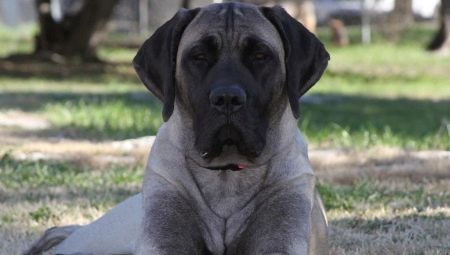
The American Mastiff is a cross between an English Mastiff and an Anatolian Shepherd Dog. The founder of this breed, Frederick Wagner, tried to solve the problem of copious salivation in European mastiffs. The breed is recognized as pure by the American Cynologists Association, but the world cynological organization does not recognize the American Mastiff as a separate breed.
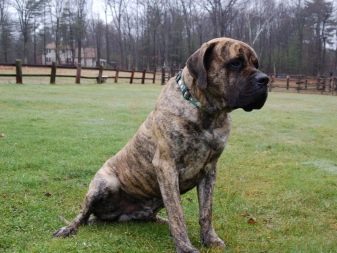
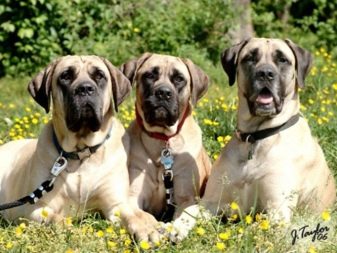
Peculiarities
In Russia, dogs of this breed are not very common, American Mastiff puppies are registered in only one organization located in the USA, it includes only 10 people. Therefore, you can buy a real representative of this relatively new breed only from them. Due to the close location of Ohio (where there is a club registering puppies) to Canada, the breed quickly spread in this country, sometimes dogs are called Canadian Mastiffs, but this is the wrong name.
When born dark, puppies brighten as they grow up, the most common colors of the breed are: beige, apricot and brindle. There may be white spots at the ends of the legs and under the chin. Dogs are considered large and keeping in small apartments will be difficult. According to the description, the growth of the largest representatives of the breed is 91 centimeters, and the weight can reach 90 kg, the smallest member registered with the association was 65 cm tall and weighed 63 kilograms.
The eyes of the mastiff are slightly oval in shape and deep set, they should be dark as well as the muzzle. The ears are hanging and rounded. The muzzle of dogs is elongated, but not sharp, but wide. A muscular neck and broad legs are also distinctive characteristics of dogs. The breed is short-haired, with a slightly harsh coat.

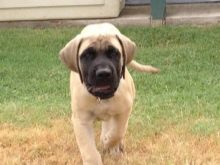
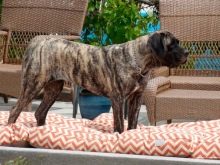
The dog looks a bit like representatives of fighting breeds. The most important exterior feature is the black mask on the muzzle.
Despite the impressive size and external similarity with fighting breeds, mastiffs have a calm and friendly disposition. Dogs are not very playful, but they need to be dealt with. Walking is required, but long runs are not recommended due to the animal's weak joints.
Very devoted by nature, they are more protective. They love to be in the spotlight and be helpful to their masters. Mastiffs are wary of strangers; in case of danger, they will protect a person to the end.
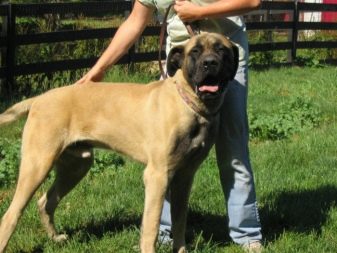

With the right upbringing, they get along well with other pets, if they do not feel threatened by them. Get along with children, but leaving them alone is not recommended due to the large size of the pets, they can make a careless movement and injure or scare the baby. They are highly trainable., but do not recognize rude treatment or punishment, you need to look for the right approach to them.
The disadvantages include laziness and the desire to dominate., dogs are not very active by nature, becoming more passive with age. Attempts to dominate the owner should be avoided; for this, a person must show his status in the right way. The dog must see the leader in the owner and respect him in order to obey commands and be obedient.
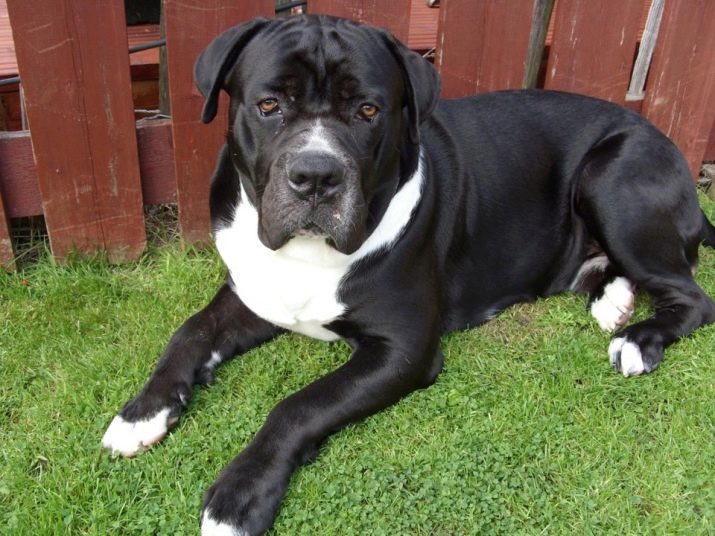
Content and training
It is desirable to keep representatives of such a large breed on the plots of private houses, but at the same time create comfortable conditions for them. Dogs do not tolerate cold weather, so for the winter it is better to take them into the house or put a heater in the aviary. It will not be difficult to keep mastiffs in rather large squared apartments, given their lazy nature.but regular walks and exercises are necessary to avoid aggressive bursts of unspent energy.
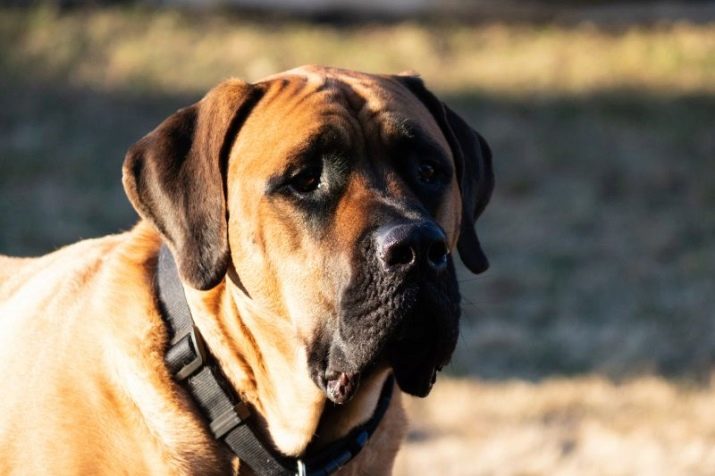
It is necessary to try to socialize and educate the dog from an early age, since an untamed and ill-bred puppy can grow into an uncontrollable aggressive dogthat will become a threat to people. American Mastiffs are very sensitive to weakness, therefore, during training, the owner's voice must be firm and confident.
If you doubt your confidence, then it is better to transfer training into the hands of specialists who, without punishment and disrespectful attitude towards the dog, will teach it to protect the owner, as well as instill all the behavioral norms. Mastiffs rarely fight, their protective functions are manifested in an attempt to intimidate and drive away a dangerous stranger from the owner, and not tear to shreds.
The main components of education are the strength of the owner and understanding of the dog. Despite the lazy nature, the mastiff will make attempts to dominate, which must be properly suppressed.
You can skip the emphasis on the dog's protective functions if you just need a dog friend. Then you should educate and socialize your pet according to other programs.
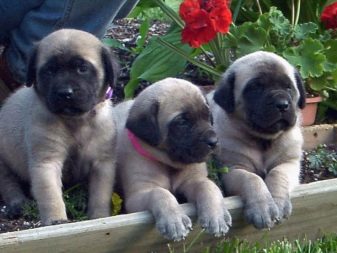
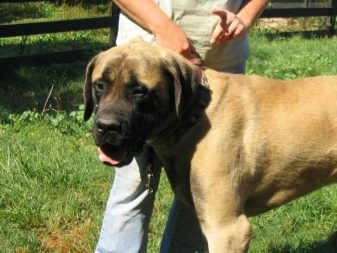
Care and feeding
The only feature in the care is the need trim the claws every two to three weeks... In these pets, the claws do not grind naturally, like in many other breeds, so the owners need to monitor this. You need to bathe the dog as it gets dirty, but not more often than once every 3 weeks, and if it lives at home, then you need to wash its paws and stomach regularly, for this it is better to use a damp cloth.
When eating, food can remain in the folds of the mouth and later lead to infections, so it is worth wiping your mouth and checking the folds for cleanliness. The same applies to the ears: it is worth examining the ears for plaque, and if dirty, wipe them with tampons. During molting, daily combing of the dog is recommended, the rest of the time - 2-3 times a month.

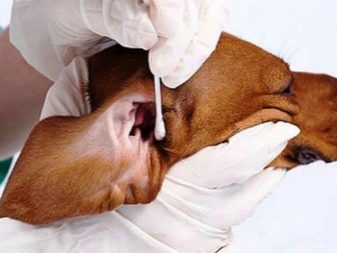
American Mastiffs are prone to obesity, therefore, nutrition must be carefully monitored. Dogs should not have open access to food.You can feed them with natural food or special feed, the main thing is to ensure that the animal's diet contains a sufficient amount of necessary nutrients for the development and maintenance of health. When feeding with natural food, you need to include in the menu:
- meat and fish products;
- cereals and offal;
- fruits and vegetables.
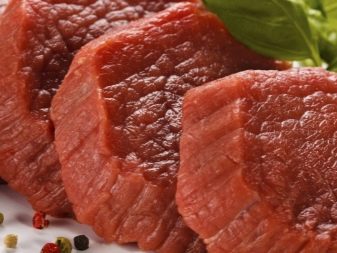
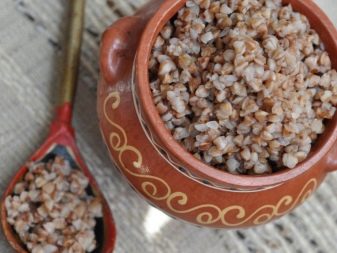
It is forbidden to give the following products:
- fried, smoked, too fatty and salty foods;
- sausage and flour products;
- confectionery;
- legumes and potatoes.
With a natural way of feeding, you need to buy vitamins for your pet.
Keeping track of obesity will be difficult, because an adult eats about 30 kg of feed per month. The physique is considered normal if the last two ribs of the pet are visible when walking.
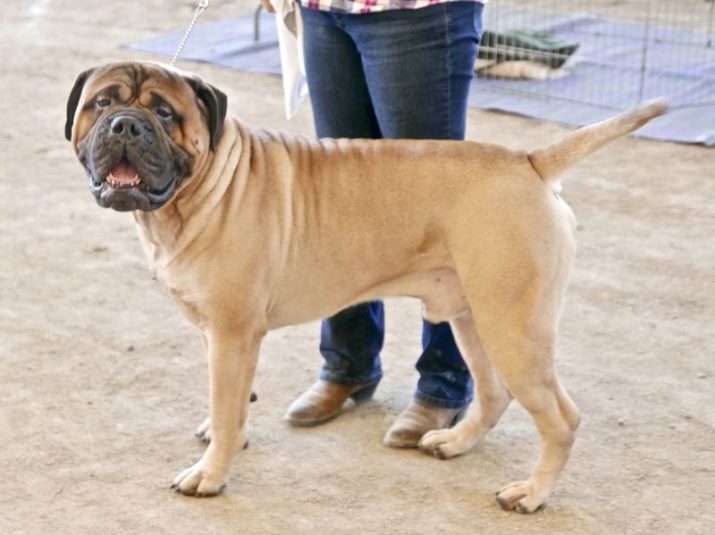
Purchase
It is not recommended to buy American Mastiffs from Russian breeders - the risk of deception is very high. You can officially buy puppies only in America., as it is not known if other breeders are breeding this breed. Due to the low demand and small population, the price of puppies varies from 60,000 to 100,000 rubles.
Mastiffs from America live an average of 11 to 15 years. Many representatives of these dogs have some genetic diseases, the most popular of which is dysplasia of the hip joints... You can find out about the heredity of the disease by carefully studying the pedigree, but the risk still remains. With this disease, proper care and treatment is needed to avoid disability and death of the pet.
The greatest attention should be paid to puppies under one year old: in what conditions they are kept and how they look. It was revealed that up to one year old puppies are most vulnerable to infections and diseases, in particular, to hepatitis.
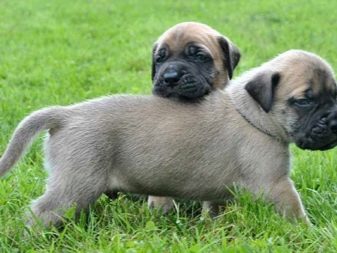
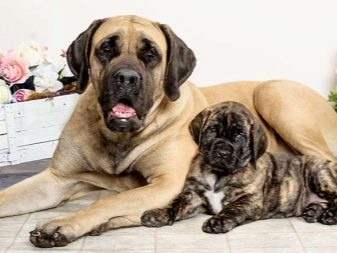
You shouldn't buy an American Mastiff if:
- you are afraid of large dogs;
- you have no experience of raising and communicating with large breeds;
- there is no free time or you are not ready to spend a lot of time and effort to educate and socialize your pet;
- if you like cleanliness and are squeamish about the dog's salivation;
- active sports may be your hobby, but not suitable for this breed.

For American Mastiff puppies, see the next video.



































